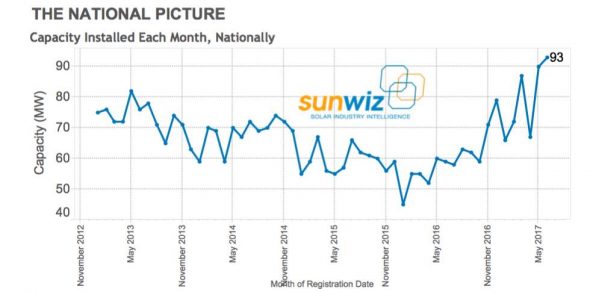Australia has enjoyed another bumper month for rooftop solar installations, with 93MW installed on homes and businesses in June, taking the total for the six months to June to a record 475MW.
This tally is higher than the peak of the premium-feed-in tariffs in 2012 and 2013, and indicates a growing realisation that one great option to deal with the cost of the fossil-fuel dominated grid is to install rooftop solar.
The new statistics, released by industry analyst Sunwiz, follow a new report released last week that showed that the average uptake of rooftop solar in Australia had now reached 25 per cent, and above 31 per cent in Queensland and South Australia.
The Sunwiz data shows that Australia now has 5.83GW of rooftop solar installed on 1.71 million homes and businesses. Queensland leads the way with 1.77GW – bigger in capacity than the state’s largest coal fired generator.
Businesses are the biggest mover in the uptake of rooftop solar – possibly because they are being hit with even bigger rises in electricity bills, and accounted for a record 33 per cent of installations in the last month, and more than 40 per cent of installations in states likes South Australia. Much of these were in the 50kW to 100kW ranges.
Sunwiz director Warwick Johnston says June was the best single month since 2012, when the solar multipliers were winding back and some feed-in tariffs were about to end.
“And this is even before people receive their first electricity bill which is likely to be 10-30 per cent higher – suggesting the pace won’t let up in the second half,” Johnston says.
Of the individual states, Queensland still led the way, although NSW had its highest month since mid 2011, and it was a record month for the Northern Territory. Western Australia is poised to overtake South Australia in the next month if current rates of installation continue.










